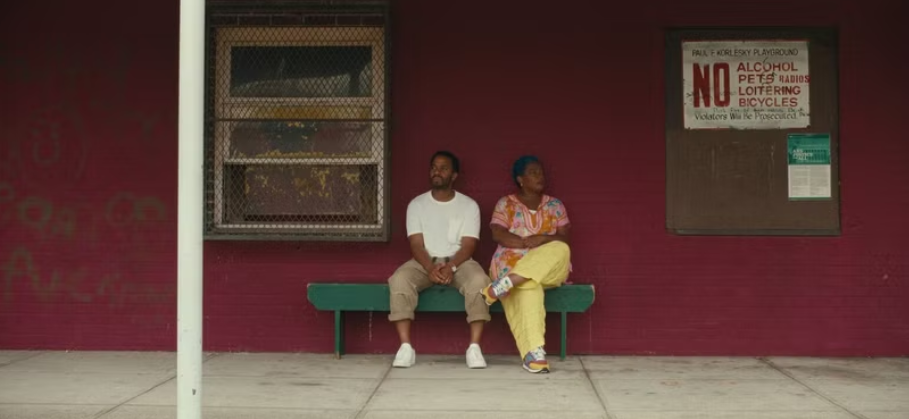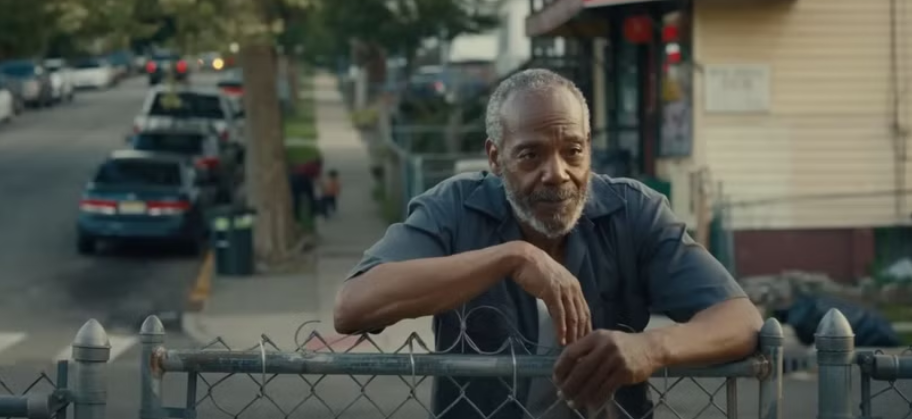Exhibiting Forgiveness Review: Titus Kaphar’s Masterful Exploration of Family Trauma
Key Takeaways
- Titus Kaphar’s feature debut offers a powerful and unsentimental look at generational trauma.
- André Holland and John Earl Jelks deliver exceptional performances as a son and estranged father.
- The film balances personal narrative with artistic commentary, avoiding easy resolutions.
Have you ever wondered how deeply the scars of the past can affect a family’s present? “Exhibiting Forgiveness,” Titus Kaphar’s poignant feature debut, dives headfirst into this complex question. The film navigates the turbulent waters of generational trauma, presenting a story that’s as raw as it is honest. It doesn’t sugarcoat pain or offer neat solutions. Instead, it invites us to witness a family’s struggle with the lingering effects of old wounds.

A Realistic Portrayal of Generational Trauma
Getting stories about generational trauma right is no easy feat. Too often, films either trivialize the pain with quick fixes or depict it as an insurmountable barrier. “Exhibiting Forgiveness” strikes a delicate balance, portraying a messy and imperfect family that neither fully reconciles nor completely falls apart. It’s a reflection of real life, where trauma doesn’t just vanish after an apology, and families can’t always escape their complicated histories.
Meet Tarrell: An Artist Haunted by the Past
At the heart of the film is Tarrell, played by the immensely talented André Holland. He’s an accomplished artist whose success can’t shield him from childhood nightmares. Returning home with his wife Aisha (Andra Day) and their son to help his mother Joyce (Aunjanue Ellis-Taylor) pack up her house, Tarrell unexpectedly encounters his estranged father, La’Ron (John Earl Jelks). This reunion forces him to confront the abuse and trauma inflicted by La’Ron, challenging him to reconcile the man he knew with the person standing before him now.
Titus Kaphar’s Artistic Vision Translates to Film
Known for his evocative artwork, Titus Kaphar brings a keen eye for visual storytelling to the screen. His background as an artist enriches the narrative, infusing scenes with symbolic imagery that speaks volumes without words. Kaphar resists the urge to provide easy answers or tidy resolutions, delving into the complexities of forgiveness as a process filled with setbacks and unresolved emotions.

The Complexity of Forgiveness
Forgiveness isn’t portrayed as a simple destination but as a tumultuous journey. Tarrell struggles to forgive his father, and the film doesn’t force a reconciliation just to wrap things up neatly. Learning about La’Ron’s own abusive upbringing doesn’t erase the pain Tarrell has endured. It’s a realistic depiction of how trauma can perpetuate through generations and how breaking the cycle is a daunting task.
Stellar Performances Elevate the Narrative
The film’s impact is magnified by outstanding performances. André Holland delivers a nuanced portrayal of Tarrell, capturing the inner conflict of a man torn between moving forward and being chained to his past. His physicality in the role shifting from light-hearted moments to tense interactions with his father adds depth to his character.
John Earl Jelks is equally compelling as La’Ron. He embodies a man seeking redemption while still entangled in the justifications of his past actions. Jelks avoids clichés, presenting La’Ron as neither a one-dimensional villain nor a conveniently reformed character. His struggle feels genuine, adding layers to the father-son dynamic.

Aunjanue Ellis-Taylor and Andra Day Shine in Supporting Roles
Aunjanue Ellis-Taylor brings warmth and complexity to Joyce, Tarrell’s mother. She serves as a bridge between the past and present, harboring her own reasons for facilitating the reunion. Andra Day’s portrayal of Aisha adds another layer, highlighting the impact of Tarrell’s trauma on his immediate family. She supports him while grappling with her own sacrifices, having set aside her professional ambitions for their family’s sake.
Art Imitating Life: The Intersection of Art and Personal Struggle
Throughout the film, Tarrell’s art becomes a medium for processing his emotions. His reluctance to stage another exhibition, despite encouragement from his agent Janine (Jaime Ray Newman), reflects his internal turmoil. The superficiality of the art world contrasts sharply with the deep personal significance of his work. This mirrors Kaphar’s own experiences as an artist in a space that often commodifies personal and cultural suffering.
A Thoughtful Exploration of the Art World’s Complexities
While the film focuses on family dynamics, it doesn’t shy away from critiquing the art world’s privileges and hypocrisies. Tarrell’s patrons are wealthy individuals who appreciate his art superficially, missing its deeper meaning. Kaphar touches on how artists’ messages can be diluted or misinterpreted when filtered through commercialism. However, he wisely keeps this commentary in the background, ensuring it doesn’t overshadow the main narrative.
The Unvarnished Reality of Family Relationships
One of the film’s greatest strengths is its refusal to offer easy solutions. When tragedy strikes, it doesn’t magically heal old wounds or bring instant forgiveness. Instead, it intensifies existing tensions, showing how unresolved issues can resurface even during crises. Kaphar presents an honest look at family relationships, acknowledging that some scars may never fully heal.
Breaking the Cycle of Abuse
Tarrell’s determination to be a different kind of father is a central theme. He strives to create a nurturing environment for his son, allowing him to express vulnerability a stark contrast to his own upbringing. This commitment to breaking the cycle adds a hopeful dimension, suggesting that while the past can’t be changed, the future holds possibilities for growth and healing.
A Mature and Nuanced Debut
For a first-time filmmaker, Titus Kaphar displays remarkable maturity and insight. His storytelling is confident, and his direction is deliberate, ensuring each scene serves a purpose. He avoids melodrama, opting for subtlety and realism. The film doesn’t dictate how viewers should feel but invites reflection on the complexities of forgiveness and familial bonds.
Cinematography and Visual Storytelling
Kaphar’s artistic background shines in the film’s visual composition. Scenes are thoughtfully framed, and the use of light and shadow enhances the emotional tone. The cinematography complements the narrative, using visual metaphors to underscore themes of absence, presence, and the spaces in between.
A Soundtrack That Resonates
The music, including performances by Andra Day as Aisha, adds emotional depth. The soundtrack weaves seamlessly into the narrative, enhancing moments of tension and introspection. It’s another layer that enriches the viewing experience.
A Story That Resonates Beyond the Screen
“Exhibiting Forgiveness” isn’t just a film; it’s a conversation starter. It prompts viewers to consider their own experiences with forgiveness and the complexities of human relationships. The story is deeply personal yet universally relatable, touching on themes many can connect with.
Conclusion: A Complicated and Beautiful Masterpiece
Titus Kaphar’s “Exhibiting Forgiveness” is a masterfully crafted film that doesn’t shy away from life’s messy realities. It’s a compelling exploration of generational trauma, forgiveness, and the arduous journey toward healing. The film’s honesty, combined with outstanding performances and thoughtful direction, makes it a standout piece of cinema. If this is any indication of Kaphar’s potential in filmmaking, we have much to look forward to in his future endeavours.
FAQ
Q: Is “Exhibiting Forgiveness” based on a true story?
A: While the film is autobiographical and draws from Titus Kaphar’s personal experiences, it is a work of fiction that explores universal themes of family and forgiveness.
Q: What makes the performances stand out?
A: The actors deliver nuanced portrayals of complex characters. André Holland and John Earl Jelks bring depth and authenticity to the father-son relationship, capturing emotional intricacies without resorting to clichés.
Q: Does the film focus heavily on the art world?
A: While the protagonist is an artist and the film touches on aspects of the art industry, the main focus is on family dynamics and personal healing. The art world serves as a backdrop rather than the central theme.
Q: Is the film suitable for all audiences?
A: The film deals with mature themes like trauma, addiction, and family conflict. It may not be suitable for younger viewers but offers valuable insights for a mature audience.
Q: How does “Exhibiting Forgiveness” differ from other films about generational trauma?
A: Unlike films that offer tidy resolutions or portray trauma in extremes, this film provides a realistic and unsentimental look at the complexities of forgiveness, acknowledging that healing is a process without easy answers.





